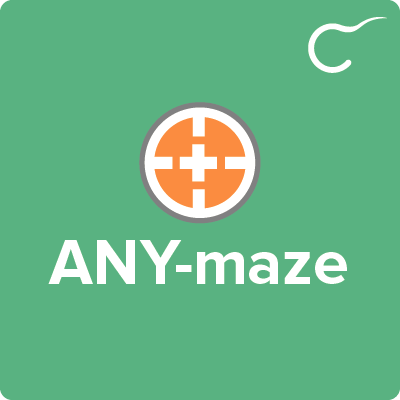The ANY-maze Behavior Tracking Software is a sophisticated video-tracking system for recording animal activity and movement during behavioral tests. MazeEngineers mazes integrate into Anymaze, please inquire for case by case scenarios to ensure customization.
Beyond video-tracking, ANY-maze is also equipped with an experiment management system and the protocol-setting feature that provides comprehensive control over the experimental process. Other features include:
- Define the apparatus and set zones and areas of interest
- Define simple and complex sequences of movement that the software can accurately detect
- Connect with a wide array of devices for use in the apparatus, enabling control of pellet dispensers, opening maze doors, etc

